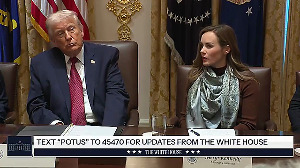Between Friday’s and Monday’s close: Yields on 10-year bonds up 6 basis points, rupee slides 13 paise against dollar, Sensex ends flat

The bond market, having a merry time since July in the hope of a rate cut, woke up to the reality on Monday that Urjit Patel’s appointment as Reserve Bank of India (RBI) governor may have nixed chances of rate support.
The yields rose sharply on Monday even as the rupee tumbled, tracking falling stocks and dollar demand from oil marketing companies.
The yields on the 10-year bond closed at 7.16 per cent, against Friday’s close of 7.10 per cent. The benchmark Sensex ended 0.33 per cent, or 91.5 points, lower at 27,985.54. The Nifty 50 index fell 0.44 per cent, or 37.75 points, to 8,629.15. The broader BSE mid-cap and small-cap indices fell around 0.4 per cent each.
The rupee closed at 67.19 a dollar, sharply down from its previous close of 67.06. The fall was led by huge demand from oil marketing companies and the central bank supplied some of the dollars to arrest a slide. The slide in rupee had started on Friday itself when it fell to a three-week low on dollar demand.
“While Patel is not a hawk, he will surely follow inflation. Now there is a little bit lesser possibility of immediate rate cut though medium term prospects of cut remain alive with good monsoon,” said Harihar Krishnamurthy, head of treasury at First Rand Bank.
The government named RBI deputy governor Urjit Patel, architect of the inflation targeting framework, as the governor of the central bank on August 20. Analysts interpreted the move as the continuation of the policy stance of the central bank as the government has accepted the target.
This reduces the chances of further rate cuts to almost zilch on the face of a sharply rising inflation. Retail inflation for July crossed 6 per cent, the fourth straight reading above RBI’s March 2017 target of 5 per cent.
Rate cut possibility, which makes money cheaper and stokes further inflation, could be a closed chapter for now, particularly after Patel’s appointment.
“In the absence of any incremental positive developments and limited scope for open market operation purchases, upward bias for bond yields remains,” said India Ratings and Research in a report.
RBI has purchased bonds worth Rs 90,500 crore from the secondary market in the fiscal 2017 so far. This is part of the central bank’s effort to pump in long term liquidity in the system to bring the banking system deficit to nil. The system is now liquidity-surplus and therefore the scope for such open market operations is also diminished.
Stock markets ended lower on Monday amid weak global cues after Patel’s appointment as central bank governor reduced the prospect of an early rate cut. Banking stocks including State Bank of India (SBI) and Axis Bank led the declines, each dropping 1.4 per cent.
The Sensex has gained over five per cent since governor Rajan’s announcement on June 18 that he won’t seek another term. The rally has largely been fuelled by robust investments by overseas investors.
However, some bet that the next governor would have a more dovish stance towards interest rates too have got added, said market players. There could be further selling, particularly in rate-sensitive stocks in the banking, automobile and real estate space, said experts. The banking sector index fell 0.54 per cent, automobile index declined 0.9 per cent and realty index fell 0.1 per cent on Monday.
Foreign institutional investors (FIIs) sold shares worth Rs 300 crore on Monday, ending their 29-day buying streak, longest since 2013. In the 29 trading sessions starting July 8, FIIs had pumped in Rs 19,650 crore ($2.9 billion) in the domestic stock market.
Meanwhile, other Asian markets ended mixed on Monday after the dollar index gained following hints by US Federal Reserve officials that a rate hike in 2016 is still a possibility.
But foreign investors are holding strong and the rupee could strengthen because of the resultant dollar inflow. But on Monday, the rupee lost along with other Asian currencies. In fact, rupee’s intraday fall of 0.19 per cent, was lower than many other Asian currencies. South Korean won fell 0.79 per cent as dollar bounced back against euro and yen. “…global conditions are reasonably conducive to the rupee’s strength,” said India Ratings in the report, adding rupee bias would stay positive.
Photographer: Reuters






